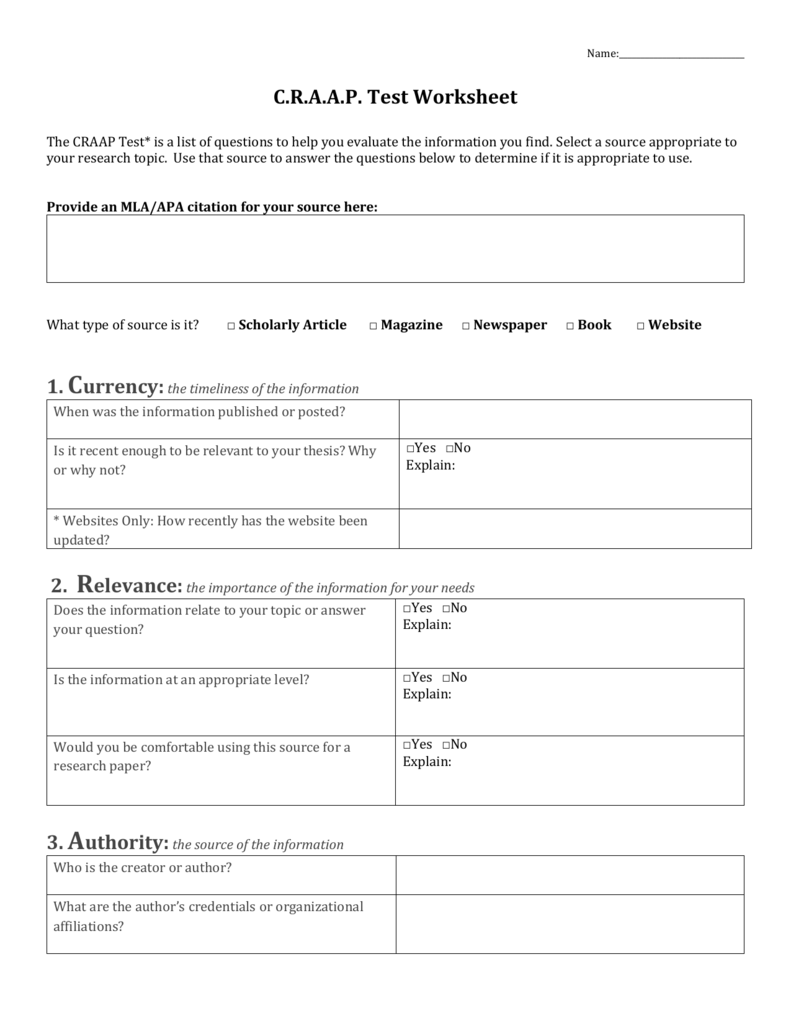


In this era when anyone can write and publish anything, thinking critically about what you read is vital.
Does the article make sense? Is there a bias towards one viewpoint or does the reporting seek to address multiple vies or sides of the issue? How does the source report the facts, are they sensationalized or distorted?
The goal of this guide is to help you understand the information cycle (what may be published and when) and to give tips to evaluate what you read.

In general, there are three types of sources of information: primary, secondary, and tertiary. It is important to understand these information types and to know when each source is appropriate to use in coursework.
Primary Sources
Primary sources are original materials on which other research is based. These sources are usually a document or result that is being reported first hand. Primary sources are original sources that are not interpretations made by someone else.
Examples of Primary Sources
Secondary Sources
Secondary Sources are sources that describe or analyze primary sources. These sources value, discuss, or comment on the primary source, and use primary sources to create their own work.
Examples of Secondary Sources
Tertiary Sources
Tertiary Sources are used to organize and locate primary and secondary sources. These sources summarize and compile fact and knowledge produced by others. Tertiary sources often assemble both primary and secondary sources together, and are used for quick access to facts. Note that not all sources within this category are suitable for scholarly writing.
Examples of Tertiary Sources
Listed below are the source formats most often used in academic and scholarly works. This list describes the source of information that each type commonly provides. (Source: Purdue OWL)
Print Sources
Books & Textbooks: Odds are, there has been at least one book that covers the research topic you are working within. Because if takes time to publish a book, the information within might be older and more dated than what you might find in journal and newspaper articles.
Newspapers: Newspapers contain up-to-date information by covering the latest events and trends. Both factual and opinion-based articles are published, so be observant when selecting newspaper articles for your research. Because of the rapid publication timeline, in-depth investigations tend to be rarer than simple fact-reporting pieces.
Academic and Trade Journals: The most up-to-date information and research in industries, business, and academia are found here. Journal articles come in several forms, including literature review, articles on theories and history, and specific research. Because these are written by experts in the field, expect a large amount of technical jargon to be included.
Government Reports & Legal Documents: The government regularly releases information intended for internal and public use. These documents can be excellent sources of information because of their regularity, dependability, and thoroughness.
Press Releases & Advertising: Companies and special interest groups often produce texts to help persuade readers to act in some way, or to inform the public about a new development. While the information can be accurate, approach these texts with caution because they are often written in a way to highlight certain facts and viewpoints.
Digital and Electric Sources
Multimedia: Printed material isn't the only option for finding research. You can also use sources such as radio and television broadcasts, interactive talks, and recorded public meetings.
Websites: Most information on the internet is distributed through websites. Websites vary widely in terms of quality of information offered. And remember, anyone can create and publish a website.
Blogs & Personal Websites: Much like basic websites, the validity and reliability of blogs and personal websites can vary. Approach with caution and determine if the writer is presenting information impartially and accurately before using.
Social Media: Social media sites are everywhere, and some may be useful, depending on the topic you are studying. Be wary of what information is posted, and verify before using.
Three Types of Publications

Use the criteria listed below to efficiently identify and evaluate information resources.
Accuracy or Credibility
Author or Authority
Coverage or Relevance
Currency
Objectivity or Bias
Sources or Documentation
Publication and Website Design
© 2023 McGovern Library, Dakota Wesleyan University
Email: library@dwu.edu | Phone: (605) 995-2618 | 1200 W. University Ave, Mitchell, SD 57301